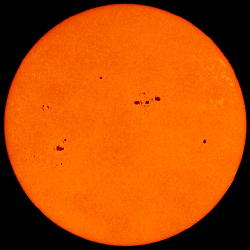

PROPAGATION INDICATORS
I suspect that most radio amateurs operating in S-W British Columbia do not realize how quickly our propagtion responds to geomagnetic activity. The effects of even the smallest perturbations in auroral levels seem to be felt immediately, causing many VE7's to believe that this area is indeed the 'radio blackhole' of North America! Although the northern lights may be lovely to look at, amateurs here are truly held hostage by their delicate dance. From VHF to LF, keeping tabs on real-time geomagnetic conditions and how they affect what you hear, or don't hear, is one of the key elements of understanding the 'magic' of radio.
As can be seen from the two images below, the level of auroral and geomagnetic activity can vary drastically from one day to another.
This information is available from the Space Environment Center web site. Polar region flux values are gathered by the Polar Orbiting Operational Environmental Satellite (POES) and extrapolated into a geographical presentation as shown above. This, in effect, represents NOAA's 'best guess' of the present level of auroral activity.
Solar activity level, the driving force of propagation, can be easily observed on the web as well. There are numerous sites offering daily images of the sun. A check of the familiar white light image will also reveal the staggering changes in solar activity from day-to-day and year-to-year. Once spots rotate past the central meridian, their influence on earth's geomagnetic field increases and any particles ejected have a much greater chance of colliding with earth. These images plus a ton of other interesting stuff is available at the Spaceweather.com site.
You may notice days when all visual indicators would seemingly point to a quiet sun with few, if any spots, and no solar flares. The expected good night of propagation that never materializes is probably the result of 'coronal hole' activity. Coronal holes are areas of the sun that are of very low density, typically 100 times lower than most of the corona, and have an open magnetic field. The field lines emerging from the holes do not loop back to the sun but rather extend into space. Coronal holes are the primary source of the solar wind and the sun's daily interaction with our geomagnetic field. Like sunspots, coronal holes do not become geo-effective until past the central meridian.
Daily coronal hole images can also be obtained from the Spaceweather.com site. A web site that I check for geomagnetic indicators is the KIRUNA MAGNETOMETER in Sweden. Its display is updated every five minutes to reflect real-time changes in the earth's geomagnetic conditions.
Another great help in predicting propagtion is Jan Alvestad's Solar Terrestrial Activity Report. Updated daily, this useful site provides: historical solar cycle data, recent and present geomagnetic activity levels, coronal mass ejection (CME) warnings, coronal hole activities and a daily propagation forecast.
For the latest planetary 'A' and 'K' numbers, check this NOAA site. If it is 'page unavailable', check back later, as the information is updated frequently. Remember, the lower the numbers, the better the propagation. Several days of very low K and A indices will usually produce spectacular low frequency propagation.
GREAT PROP LINKS If you are interested in learning more about propagation and its causes, there is a huge amount of practical information available on the following web sites.
SPACE WEATHER NOW -Real time solar - wind dials, geomagnetic alerts, auroral oval map...great page!
ARRL's K9LA PROP INFO - The Sun, the Earth, the Ionosphere. What the numbers mean and propagation predictions.

